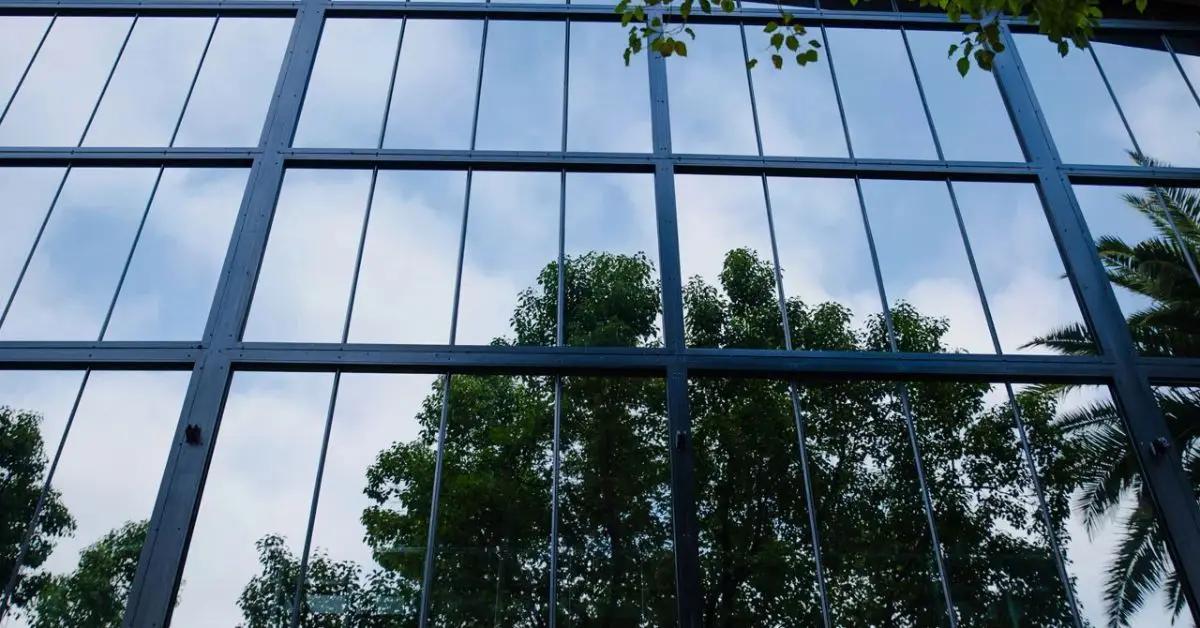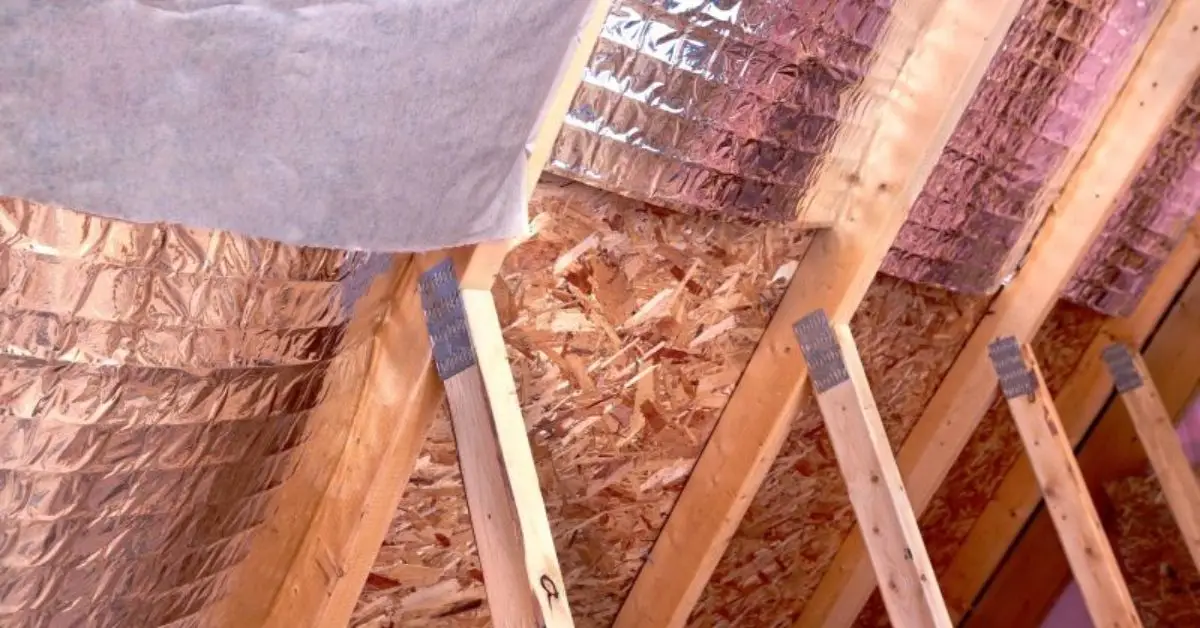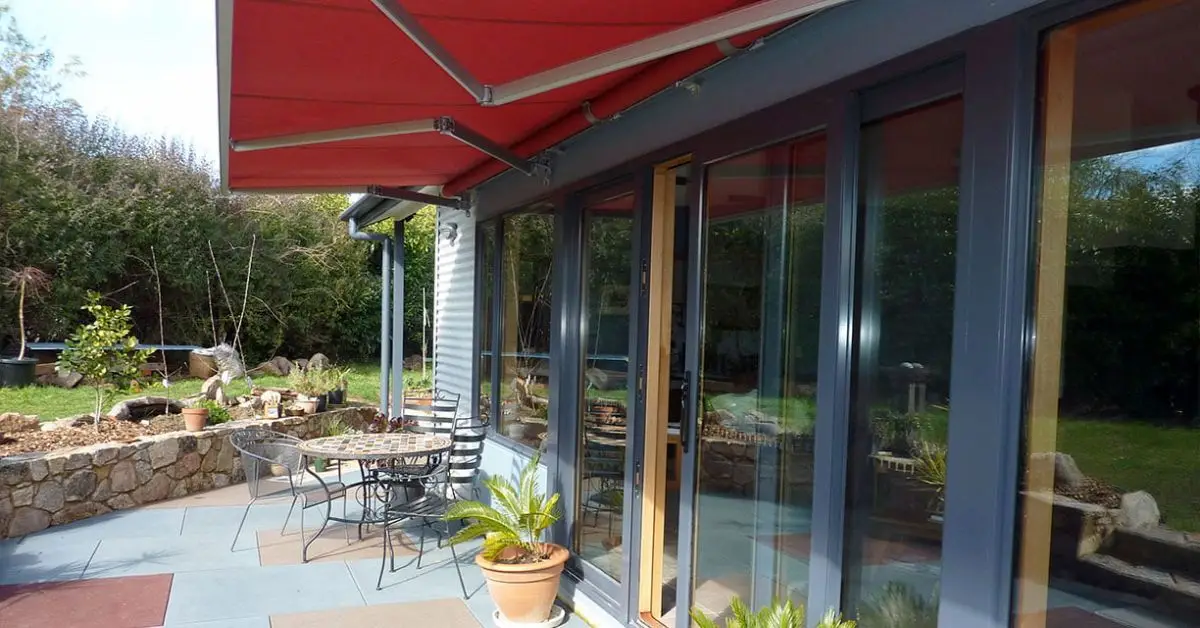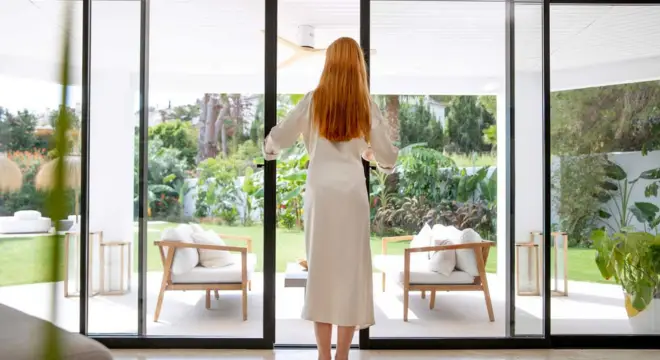Beat the Heat: 10 Simple Home Upgrades to Keep Your House Cool
You know that moment in summer when stepping inside your own home feels no different than being out in the heat? I’ve been there — blinds down, fans on, AC humming… and still sweating.
The truth is, staying cool at home isn’t just about cranking the air conditioner. It’s about how your home responds to heat — how it absorbs, traps, or reflects it. And most homes are silently working against us.
That’s why I put together this list of 10 simple but powerful home renovation projects that can actually help you beat the heat — and not just survive, but feel comfortable and in control all summer long.
No vague “drink water” tips here. These are practical, real upgrades — some quick and cheap, others worth the investment — that cool your house from the roof to the floor.
And if you’re tired of feeling like your AC bill is robbing you every month, this is for you.
1. Upgrade to a Cool Roof or Add Reflective Coating
Let me tell you this upfront — if your roof traps heat, your AC will always be fighting a losing battle. The roof is the first place sunlight hits, and in peak summer, it can easily heat up to 150°F or more. That heat radiates into your home like an oven.
Now, here’s what most homeowners don’t realize: a “cool roof” — either made with reflective materials or just coated with a high-SRI paint — can cut that surface temperature by up to 50°F. That’s not a small difference. It translates into noticeably cooler rooms below and significantly lower AC bills.
You don’t always need to replace your entire roof. Reflective coatings, like white elastomeric paint or specialized roof sealants, are DIY-friendly and cost far less than a full re-roofing. And if you’re living in an older home with a dark roof, this one upgrade can feel like switching off summer’s heat from the top down.
I recently spoke to a friend in Jaipur who used a white solar-reflective coating on his flat concrete roof. He told me his bedroom felt 5–7 degrees cooler instantly — no structural changes, no extra insulation, just that one smart layer.
If you live in a hot region or even face westward sun exposure, don’t skip this one. It’s where real cooling starts — not with gadgets, but with better surfaces. And just like summer demands a cool roof, winter brings its own challenges — like ice dams and leaks. Don’t miss these 10 expert winter roof protection tips to keep your home weather-ready all year long.
Would you consider coating your roof this summer if it meant a 10% drop in your energy bill?
2. Swap Out Heat-Trapping Windows or Add Reflective Films
Let’s be honest — windows are where most homes lose the battle against summer heat. They let in sunlight, trap warm air, and turn your living room into a greenhouse.

If your home still has single-pane or basic sliding windows, you’re probably paying for that mistake every month through your energy bill. Replacing them with double or triple-glazed low-E glass windows makes a massive difference — not just in cooling, but also in outside noise reduction and overall insulation.
But here’s the thing: not everyone has the budget for full window replacement. That’s where heat-rejecting window films come in — a solution I rarely see mentioned properly in mainstream guides. These films are inexpensive, DIY-friendly, and block up to 78% of solar heat and 99% of UV rays depending on the type you use.
I’ve used reflective film on west-facing windows in my home office, and the difference is real — less glare, less sweat, and less guilt about keeping the AC running. You just clean the glass, apply the film like a screen protector, and enjoy immediate results.
Also, don’t forget good shading habits. Add blackout cellular blinds or thermal curtains — especially in south or west-facing rooms. And if you can go a step further, consider adding exterior shades or awnings, which block sunlight before it even hits the glass.
Most articles mention “curtains” as an afterthought. But combined with films, blinds, and smart habits like closing them during peak hours, windows become a line of defense instead of a heat trap.
Quick tip: Even a cheap roll of reflective tint can save you more than its cost in one summer. And if you rent, it’s totally removable.
Tell me: Have you ever tried blocking heat at the window level? What worked — and what didn’t?
3. Add Attic Insulation and a Radiant Barrier (This One’s a Game-Changer)
Let’s talk about something most people never check — the attic. It’s out of sight, so we assume it doesn’t matter. But during summer, your attic turns into a giant heat reservoir, storing all the sun your roof absorbs… and slowly releasing it down into your living spaces.

If your bedroom is right under the roof, you’ve probably felt this. You walk in at night and it’s still hot — even though the sun set hours ago. That’s your attic radiating stored heat.
This is why attic insulation isn’t just for winter. Adding high-R-value insulation (like cellulose or spray foam) blocks that heat from transferring downward. But the real power move? Pair it with a radiant barrier — a shiny foil layer stapled under your roof deck that reflects heat before it ever reaches the insulation.
I helped a neighbor install a radiant barrier in Gurgaon last summer — nothing fancy, just foil-backed sheets on the attic ceiling. He texted me a week later saying, “Bro, I didn’t even need to turn on the AC until 3 PM.”
Most homeowners have no idea how much heat they’re fighting from above. They keep upgrading their AC… without fixing the source of the problem.
Cost-wise, this combo isn’t crazy expensive. And if you DIY the radiant barrier (just a ladder, staple gun, and patience), it’s one of the highest ROI upgrades for hot weather.
Ask yourself this: When was the last time you looked inside your attic — and does it feel like a sauna in there?
4. Install a Whole‑House Fan or an Attic Ventilation System
Here’s something I wish more homeowners knew: staying cool isn’t just about blowing cold air in — it’s also about getting hot air out.
If your home holds on to heat like a sauna, your AC ends up working twice as hard for half the comfort. That’s why a whole-house fan or a smart attic ventilation system can be a total game-changer.
These fans pull in cooler outdoor air through your open windows and push the hot air out through attic vents. The result? A full-home temperature drop that feels natural — without overloading your AC.
If you live in places like Northern California, Colorado, or the Midwest — where nights are cooler even in July — this one upgrade can completely shift your cooling game.
And even if whole-house fans aren’t a fit, attic ventilation fans still make a big impact. These kick in automatically when the attic gets hot, exhausting that trapped air before it heats your living space below.
Most people don’t realize that a super-hot attic can push your upstairs temps up by 10°F or more. And yet, it’s often ignored in renovation checklists.
You can find high-quality attic fans in the $100–$250 range at Home Depot, Amazon, or local HVAC suppliers. And if you’re even a little handy, installation can be a weekend project.
Pro tip: Make sure your attic has enough intake vents (like soffits or gables), or your fan won’t work efficiently.
Think about it: What if your upstairs bedroom didn’t feel like a heat trap every night? Would that one fix be worth a couple hundred bucks?
5. Seal the Gaps, Cracks, and Leaks That Are Leaking Cool Air (and Your Money)
This might not sound exciting, but trust me — sealing air leaks is one of the most underrated cooling upgrades you can make.
Because what’s the point of running your AC all day if that cool air is escaping through tiny cracks around your windows, doors, attic hatch, or even electrical outlets? It’s like trying to fill a bucket with holes in it.
According to Energy Star, sealing leaks and adding insulation can save the average U.S. homeowner up to 20% on heating and cooling costs. That’s hundreds of dollars a year — gone, just because of poor sealing.
And here’s what most SERP articles don’t tell you: air leaks don’t just happen around windows. Cool air can also leak from:
- Gaps behind baseboards
- Attic door or pull-down stairs
- Dryer vent outlets
- Light switch plates on exterior walls
- Recessed ceiling lights (huge culprit!)
I did a home energy audit on my own place using an incense stick — walked around the baseboards, outlets, and attic access. You’d be shocked at how many places that smoke started drifting. That’s all lost comfort… and cash. If you’re thinking long-term (or even prepping to sell), here are 5 genius home upgrades under ₹500 that make your home look more expensive — including fixes like sealing air leaks that pay off fast.
Grab a few tubes of paintable caulk, a roll of weather stripping, and some foam gaskets for outlets. All in? Maybe $40–60. Time spent? A few hours. ROI? Huge.
Bonus: If you live in a drafty older home or a dry climate like Arizona or parts of Texas, sealing those air leaks also helps with humidity control — meaning less strain on your HVAC.
So let me ask you this: When was the last time you walked your home with a flashlight or a smoke stick to feel where the air is leaking?
6. Block the Sun Before It Hits: Trees, Awnings, and Smart Exterior Shade
If you want a cooler home, stop trying to fight the heat after it’s already inside. The smartest move? Block the sun before it ever touches your windows or walls.

This is where exterior shading shines — literally. Whether it’s tall trees, shade sails, pergolas, or simple awnings, the goal is the same: intercept sunlight before it becomes indoor heat.
According to TreePeople.org, the shade from mature trees can cool surrounding air temperatures by 2°F to 9°F, and reduce indoor heat gain by up to 30%.
Most SERP articles mention “landscaping” in one throwaway line. But this is more than aesthetic. Strategic shading (especially on the south and west sides) can:
- Keep your walls and windows cooler
- Extend the life of your exterior paint and siding
- Cut down on AC runtime in the hottest part of the day
And you don’t need a full landscaping budget. Even simple shade cloths or adjustable awnings installed over key windows or patios can drop the indoor temp by several degrees.
Here’s something I’ve seen work firsthand: a friend in Texas planted fast-growing hybrid poplar trees along his west wall. Within three summers, his upstairs felt 5–7°F cooler in the evenings — and he cut his AC use nearly in half during peak hours.
And for renters or apartment dwellers? Hang a shade sail on your balcony. Use reflective exterior curtains. Or add potted climbing vines with trellises — they look great and work.
Smart tip: Consider deciduous trees. They give you cooling shade in the summer and let sunlight through in winter when you want that warmth.
So ask yourself this: What’s beating down on your home from 2 PM to 6 PM every day — and how could you block it before it bakes your rooms?
7. Get Smart About Cooling: Thermostats, Zoning, and Smarter Comfort
If you’re still using a basic wall thermostat that just turns the AC on or off… you’re probably cooling rooms that no one’s in — and wasting serious money.
Smart thermostats do more than just look sleek on your wall. They learn your patterns, adjust temperatures automatically, and help you stay cool without constant fiddling. You can set different temps for different times of day — or even control it from your phone when you’re not home.
But here’s where it gets next-level: zoned cooling.
Zoning means you don’t have to cool the whole house evenly. You cool the bedroom at night, the living room in the evening, and shut off unused spaces. It’s like customizing your comfort by the hour — and not overworking your HVAC system in the process.
This works especially well if:
- You have a multi-story home (upstairs is always hotter, right?)
- Certain rooms face direct sun during the day
- You’re not home all day and want the AC to adjust while you’re out
I personally use a Nest Thermostat. It took about 10 minutes to install and immediately started showing me energy usage trends I’d never paid attention to before. It even nudges you with seasonal reminders — like when to adjust the schedule as temperatures rise.
Bonus: Some models, like Ecobee, come with room sensors so it can prioritize cooling based on where you actually are. Game-changer.
Bottom line: Your home doesn’t need to feel like a walk-in freezer 24/7 — it just needs to be cool where you are.
Question for you: If you could stop cooling empty rooms and still feel more comfortable, wouldn’t you?
8. Use the Right Window Treatments — Not Just Pretty Drapes
If you’re relying on thin curtains or stylish blinds to block summer heat… you’re probably losing the battle before it even starts.
Most window coverings are made for looks, not insulation. But the right setup can make a noticeable difference in how your home feels — especially during those brutal afternoon hours when sunlight blasts through the glass.
Let’s cut straight to it. You need materials that block heat, not just light. That means:
- Cellular (honeycomb) shades – trap hot air in their pockets, act like mini insulators
- Thermal curtains – made with multiple layers that reflect heat and block it from entering
- Dual-layer blackout + reflective curtains – perfect for west-facing rooms
According to the Department of Energy, properly installed window coverings can reduce heat gain by up to 77%.
I installed double-cell blackout shades in my living room last summer. They cost about $70 per window — but the temperature drop in the afternoon was instantly noticeable. No sweaty couch naps. No need to drop the thermostat 2 more degrees just to stay sane.
And if you want to automate the whole thing? Go with motorized blinds that sync with your smart thermostat. Set them to lower at noon and rise at 6 PM — hands-free cooling.
This isn’t just about comfort, either. Reducing direct sunlight also protects your furniture, flooring, and electronics from UV damage — something a lot of homeowners overlook until it’s too late.
Quick tip: Combine internal window treatments with external solutions (like awnings or reflective film) and you’ve created a double-layer defense against heat.
What to think about: Are your current curtains blocking heat — or just fading while the sun cooks your walls?
9. Use Heat-Reflective Paint and Lighter Exterior Surfaces
Here’s a secret not many people talk about: your house color isn’t just about curb appeal — it’s also about how much heat it absorbs.
Darker walls, roofs, and even patios can act like heat magnets. They soak up sunlight during the day and keep radiating it back into your home long after the sun sets. That’s why some homes feel hot even late at night, even when the AC is running full blast.
The fix? Cool paint technology and light-reflective finishes.
There are now exterior paints made with special additives that reflect infrared sunlight, instead of absorbing it. You can get these in roof coatings, wall paints, and even for driveways or decks. Many brands label them as “cool coat” or “solar-reflective.”
Even without special formulas, simply switching from dark brown or charcoal to light beige, cream, or white on sun-facing surfaces can reduce heat absorption significantly.
I saw this firsthand when a client in Phoenix repainted his south wall — just that one change dropped his room temperature by nearly 5°F during peak hours. He didn’t even touch the AC settings.
This is also one of those upgrades that pays you back slowly, season after season — less heat gain = less energy used = less wear on your HVAC system.
Cost? Depending on the area, a heat-reflective paint job might run $1.50–$3 per square foot, but it’s often eligible for local energy efficiency rebates.
Bottom line: If your house is dressed in black for the summer… it’s time for a wardrobe change.
Your turn: What color are your sun-facing walls right now — and are they working for you or against you?
10. Bonus: Low-Cost Cooling Hacks That Actually Make a Difference
Not every upgrade needs a contractor or a thousand-dollar budget. Sometimes, it’s the small changes that stack up to big comfort. And honestly, these are the tricks I use myself when summer hits hard.
Here’s what works — and why:
Reverse your ceiling fans (yes, really)
Flip the little switch on your ceiling fan to make the blades spin counterclockwise in summer. It creates a wind-chill effect and makes rooms feel up to 4°F cooler, even if the thermostat stays the same.
Unplug heat-generating devices
TVs, modems, chargers — they all give off a surprising amount of heat. Unplug or move them away from spaces you’re actively cooling. Every watt counts when the sun’s already doing too much.
Swap incandescent bulbs
Old-school bulbs get hot. Switch to LEDs, especially in ceiling fixtures. They stay cool and save energy too.
Keep doors closed
You’d be surprised how many people leave unused room doors open all day. Close them to trap cool air where you actually need it — like the bedroom or home office.
Use a dehumidifier
In humid regions, high moisture makes the heat feel worse. A good dehumidifier can make 78°F feel like 72°F — and helps your AC work less hard.
Open windows strategically
If you live in a region where it cools down at night (think Pacific Northwest, Colorado, inland California), turn off the AC, open the windows, and flush the house with fresh air before sunrise. Then close everything by 9 AM to trap that coolness.
These aren’t replacement solutions — they’re layered reinforcements. Stack them on top of your bigger upgrades, and you’ll feel a noticeable difference in comfort, control, and cost. While you’re stacking up small wins this summer, why not check out these 8 must-try vinegar and baking soda cleaning hacks to refresh and maintain your home without toxic chemicals?
Quick ask: Which of these small hacks are you already doing — and which one will you try this week?
So, What’s Your Next Move?
If your home feels like it’s working against you in summer, you’re not alone — and you’re definitely not stuck with it.
Heat doesn’t just come from outside; it builds up through the way your home is designed, ventilated, shaded, and sealed. But as you’ve seen, keeping your space cool doesn’t always mean a massive renovation or sky-high electric bills.
You’ve now got 10 solid strategies that actually work — backed by data, tested in real homes, and practical for real people.
Whether you make one change this weekend or plan a full upgrade for next season, here’s a quick way to turn ideas into action.
Quick Action Plan
- Start with the biggest impact zone: check your roof and attic insulation
- Seal and weatherproof any obvious leaks, gaps, or heat entry points
- Add window treatments that insulate, not just decorate
- Use trees, awnings, and exterior shade to block afternoon sun
- Switch to reflective paints or finishes on hot surfaces
- Install a smart thermostat and learn how to zone your cooling
- Reverse your ceiling fans and upgrade to LED lighting
- Time your airflow — windows open at night, sealed by morning
- Use a dehumidifier to make your space feel cooler without changing the thermostat
- Stack the small wins — every degree you keep out is one your AC doesn’t have to fight
Cooling your home is about building layers of defense — not one magic solution. The more intentional you are, the more comfortable, efficient, and affordable your summer can be.
So here’s the real question:
What will you fix or upgrade first?
And if you know someone still battling the heat with nothing but fans and frustration — send this their way.
Ready to transform your home into a cool, energy-efficient haven? Visit Build Like New today and start building the future you deserve.
Disclaimer: This article is for informational purposes only. Always consult with a licensed contractor or home energy expert before starting any renovation or installation project. Build Like New is not responsible for individual project outcomes or third-party service recommendations.


